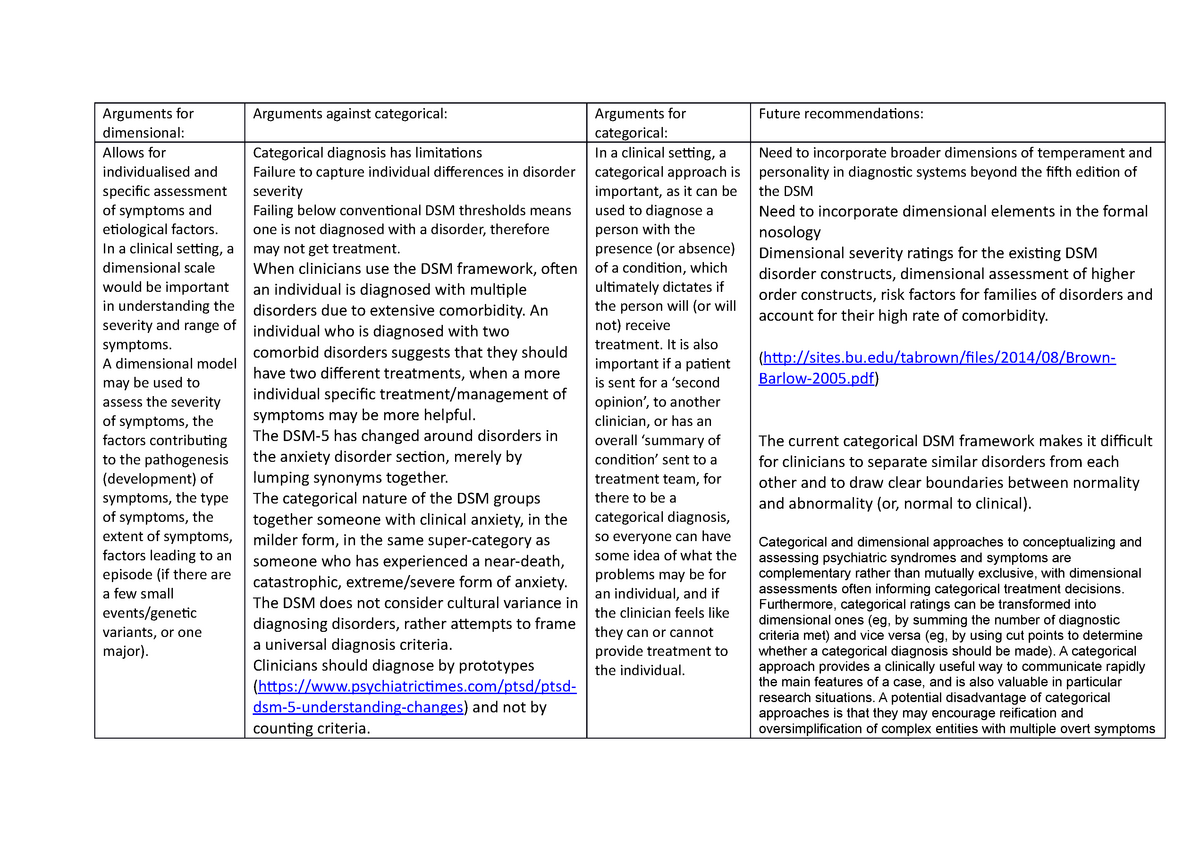Reasons Why It Might Be More Helpful To Conceptualise And
Dimensional assessment of psychopathology is important for understanding disorder severity, subclinical presentations, and change over time. EDs, depression, and anxiety can all be viewed as dimensional models, rather than categorical ones. This approach has been receiving more attention in preparation for its inclusion in DSM-5 and has been shown to have strong psychometric properties and clinical sensitivity. Additionally, this approach allows for the identification of common underlying mechanisms for mental disorders. The use of dimensional scales, such as the GAD-7, is also beneficial for assessing specific anxiety problems. However, there is still debate over whether child and adolescent mental disorders should be classified using categorical or dimensional approaches.
The study by Lebeau et al. (2012) offers several insights into why it might be more helpful to conceptualize and diagnose anxiety disorders based on dimensional, rather than categorical models. The researchers emphasize that a dimensional assessment of psychopathology is crucial for understanding disorder severity, subclinical presentations, and change over time.
By adopting a dimensional approach, individuals' experiences of anxiety can be more accurately captured. Anxiety and related conditions often exist along a spectrum, and a dimensional model is better equipped to accommodate the wide range of symptoms and their varying intensities.
Moreover, the researchers note that the dimensional model has strong psychometric properties and clinical sensitivity. This allows for a more precise and comprehensive understanding of anxiety disorders and facilitates tailored interventions based on individual symptom profiles.
Furthermore, the dimensional approach enables the identification of common underlying mechanisms for mental disorders, which can be instrumental in developing effective treatment strategies.
In conclusion, the study by Lebeau et al. (2012) highlights the benefits of adopting a dimensional approach in conceptualizing and diagnosing anxiety disorders. This includes improved sensitivity to disorder severity, comprehensive understanding of subclinical presentations, and the potential for identifying common mechanisms underlying various mental health conditions.
Sources


Related Questions
Work fast from anywhere
Stay up to date and move work forward with BrutusAI on macOS/iOS/web & android. Download the app today.
